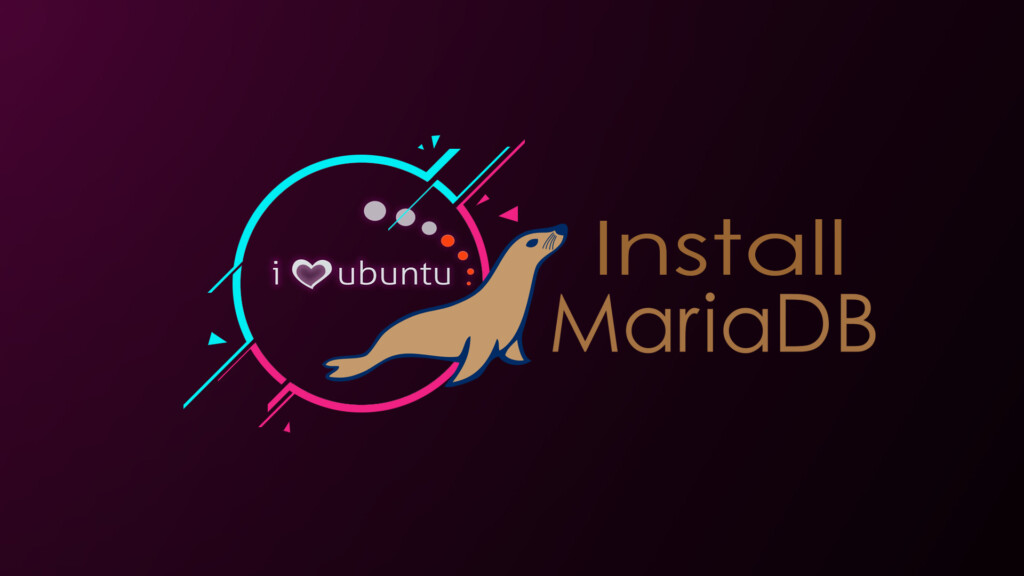MariaDB is a high-performance, open-source relational database management system (RDBMS) designed to be fully compatible with MySQL. It is widely used in web applications, software development, and enterprise solutions. This guide walks you through installing and securing MariaDB on Ubuntu 22.04/24.04 LTS efficiently.

Why Choose MariaDB Over MySQL?
- Faster Performance: MariaDB outperforms MySQL in many use cases, especially for read-heavy workloads. Benchmark tests show MariaDB can handle up to 40% more queries per second than MySQL under similar conditions.
- Full MySQL Compatibility: If you’re migrating from MySQL, MariaDB works as a drop-in replacement, supporting the same commands, clients, and connectors.
- Active Development & Open Source: Unlike MySQL (now owned by Oracle), MariaDB is maintained by an open-source community, ensuring continuous improvements and transparency.
- More Storage Engines & Advanced Features: MariaDB includes extra storage engines like Aria, TokuDB, and MyRocks, which are not available in MySQL.
Install MariaDB
These steps will install the latest stable version compatible with your system. If you want to install a specific version or try the newest release, refer to the official MariaDB documentation.
Step 1: Update Your System
Before installing MariaDB, update your package lists to ensure you get the latest version:
sudo apt updateStep 2: Install MariaDB
Run the following command to install MariaDB:
sudo apt install mariadb-server -yOnce installed, verify the installation with:
mariadb --versionStep 3: Secure the MariaDB Installation
By default, MariaDB comes with some insecure settings. Secure it using:
sudo mysql_secure_installationThis script will guide you through:
✅ Setting a root password (MariaDB 10.4+ uses Unix socket authentication, so this may be optional).
✅ Removing anonymous users to prevent unauthorized access.
✅ Disabling remote root login for security.
✅ Deleting the test database that comes pre-installed.
Screenshot step:

Step 4: Verify MariaDB is Running
Ensure MariaDB is active and starts on boot:
sudo systemctl enable mariadbCheck the status:
sudo systemctl status mariadbIf MariaDB is running correctly, you should see output like: Active: active (running) since …
Step 5: Connect to MariaDB
To access the MariaDB shell, use:
sudo mysqlor, if a password is required:
sudo mysql -u root -pOnce inside the MariaDB shell, verify that databases are working by running:
SHOW DATABASES;Step 6: Create a Database and User
To create a database and a new user with full privileges, run:
CREATE DATABASE my_database;
CREATE USER 'my_user'@'localhost' IDENTIFIED BY 'strong_password';
GRANT ALL PRIVILEGES ON my_database.* TO 'my_user'@'localhost';
FLUSH PRIVILEGES;
exit;Common Installation Issues & Fixes
Issue: Can’t Connect to MariaDB (Socket Error)
If you see an error like: Can’t connect to local MySQL server through socket ‘/var/run/mysqld/mysqld.sock’
Try restarting the service:
sudo systemctl restart mariadbOr check for missing MariaDB directories:
sudo mkdir -p /var/run/mysqld
sudo chown mysql:mysql /var/run/mysqld
sudo systemctl restart mariadbIssue: MariaDB Conflicts with MySQL
If MySQL is installed on your system, it may conflict with MariaDB. Remove MySQL first:
Note:Backup your data before deleting anything. If you’re doing a fresh installation and don’t have important data, feel free to wipe everything and start over—it will be easier than troubleshooting errors.
1️⃣ Stop MySQL and Remove It
sudo service mysql stop
sudo apt purge 'mysql*' mysql-server mysql-client mysql-common mysql-server-core-* mysql-client-core-*
sudo apt remove 'mysql*' && sudo apt autoremove && sudo apt autoclean
sudo rm -rf /etc/mysql /var/log/mysql2️⃣ Backup /var/lib/mysql Before Removing MySQL (If Needed)
Before removing MySQL, check if you have important databases in /var/lib/mysql. If yes, back them up to avoid data loss:
sudo systemctl stop mysql
sudo cp -r /var/lib/mysql /var/lib/mysql_backup_$(date +%FIf you’re setting up MariaDB from scratch and don’t have any important data, you can remove MySQL without backing up. In that case, just delete /etc/mysql instead of wiping everything:
sudo rm -rf /etc/mysql3️⃣ Install MariaDB
Now, proceed with installing MariaDB as per Step 2.
You have successfully installed and secured MariaDB on Ubuntu 22.04/24.04 LTS! Now, you can create databases, manage users, and optimize performance.